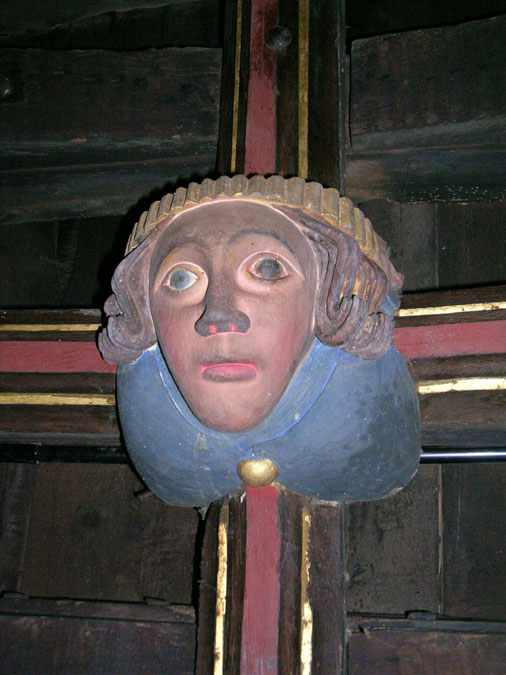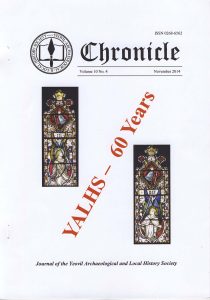This article came from the Chronicle published November 2014. Page 120.
King Ine of Wessex
Author: Jean Harper
The story of King Ine (or Ina) is a remarkable one.1 He became King of Wessex in 688, inheriting a kingdom which stretched from Kent and Sussex to Devon. Although he is little known today, he is considered by some historians to be one of the most powerful West Saxon rulers before Alfred the Great. Throughout his long reign (AD 688-726), Ine spent much of his time fighting neighbouring leaders to acquire new territory or to keep what he had and, by the end of his reign, his territory of Wessex was more firmly established in what we now know as the counties of Wiltshire, Hampshire, Dorset, Somerset and Devon. According to the Anglo-Saxon Chronicle, he drove the Britons from their boundary on the River Parrett and constructed a temporary ‘palace’ in what is now South Petherton, before building an ‘earthen castle’ at Taunton c. AD 700.2 This was subsequently destroyed by his queen, Æthelburg, in 722 to prevent its seizure by rebels, and little is known of its whereabouts.3 We have more information about the South Petherton palace. The fact that Ine is said to have occupied a temporary palace at South Petherton is mentioned in more than one account of the life of Ine. In the early 17th century a visitor to the village enquired about the site of the palace and was told that it had stood ‘something south of the church’, but that ‘there was now nothing to see’. However there is still a house in South Petherton which is known as King Ina’s Palace. It is Grade 2* listed and parts of it date back to the 14th century, but it is debatable whether it occupies the site of the original palace. It is also reported that Ine had a fort at Somerton and that his witan, or council, met there at least once.4
There are, however, other aspects of his life which are of wider social significance. He was a Christian ruler at a time when Christianity in England was in its infancy, and throughout his reign he was ‘particularly solicitous for the welfare of religion and religious establishments’.5 Among other initiatives, he founded a minster at Wells which later became the Cathedral; he built a stone church at Glastonbury and he supported other monastic establishments in the area, such as those at Malmesbury, Wimborne, Tilbury and Sherborne.6
He was the first West Saxon king to issue a Code of Laws, and these covered many aspects of everyday life, including religious observances. Among the advisors named in the prologue to his Code of Laws are two bishops, and some of the laws concerned the spiritual welfare of his people. For example, a child had to be baptised within thirty days of its birth, working on Sundays was prohibited and church dues had to be paid at Martinmas. Another section dealt with the rights and responsibilities of the ceorls (Saxon freemen) in relation to the enclosure of common land. Any ceorl who failed to fence his share and allowed his cattle to stray into someone else’s field was to be held liable for any damage caused. It is suggested by some scholars that such laws dealing with straying cattle provide early evidence of an open field farming system. The law which mentions a ‘yard’ of land is the first documented mention of that unit, though it seems that a yard was a unit of land equal to a quarter of a hide, not the measurement that we know today.
As might be expected, military service featured in the laws. One requirement involved the imposition of a fine for neglecting fyrd (the obligation to do military service for the king). This was set at 120 shillings for a nobleman and 30 shillings for a ceorl – a requirement which reveals that ceorls were required to serve in the army, though some scholars question the military value of such men. [The source of this information (Wikipedia) does not reveal whether they were required to undertake some form of rudimentary military training.] These are just a few examples of Ine’s laws. They survive today because Alfred the Great appended a selection of them to his own Code of Laws, which can be found in a manuscript contained in the Peterborough Chronicle, and they provide an important source of information about the structure of early English society.7
From this very brief account it can be seen that Ine exerted a great deal of influence over all aspects of life in the West Country. He established a more settled land boundary for his kingdom of Wessex, he reinforced the power of the church and, with his Code of Laws, he created what might be considered an early form of constitution for his kingdom. After his long and eventful reign Ine abdicated in favour of `younger men’ and he and his wife, Æthelburg, retired to Rome, where he founded a hospice for English pilgrims. Some historians trace the foundation of the English College in Rome back to this hospice.8 He died in 728 and was buried in Rome.
Notes
1 Unless otherwise stated, the main source used in this article is Wikipedia.
2 South Petherton website http://www.southpetherton.com/history.html
3 Taunton website
4 Somerton website
5 Catholic Encyclopedia website
6 Catholic Encyclopedia website
7 Corpus Christi College MS173, see http://en.wikipedia.org/wiki/Ine of Wessex
8 Catholic Encyclopedia website

